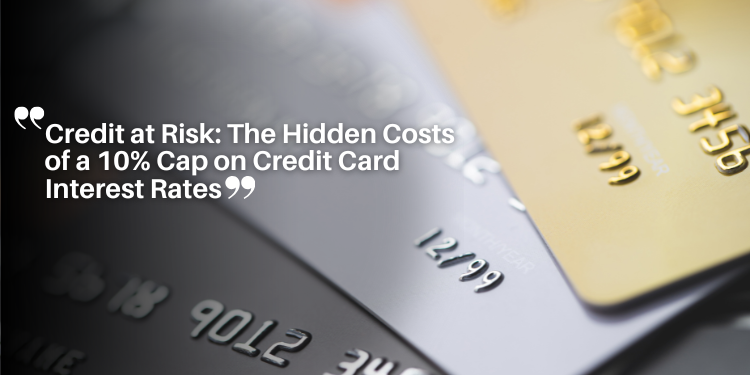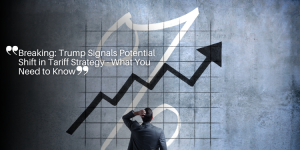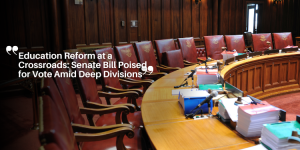Credit at Risk: The Hidden Costs of a 10% Cap on Credit Card Interest Rates

Exploring How a Federal Rate Ceiling Could Limit Access to Credit for Millions of U.S. Households
Introduction: A New Policy Debate in Washington
Recent bipartisan legislation introduced in the U.S. Senate has reignited a contentious debate over consumer credit: a proposed federal cap limiting credit card interest rates to 10 percent.
Though the measure aims to alleviate financial burdens for indebted households, its unintended consequences may pose serious risks to credit access—particularly for low-income consumers and those with non-prime credit scores.
Drawing on robust data from the Federal Reserve Board’s Survey of Consumer Finances (SCF), this article critically examines the likely effects of this policy shift.
By analyzing consumer behavior across credit card usage, interest rate trends, and risk profiles, the analysis reveals that while the proposal may appear protective on the surface, it could result in widespread credit line reductions and increased financial vulnerability.
Understanding the Rationale for Rate Caps
The push for an interest rate ceiling stems from well-meaning efforts to address spiraling household debt.
Supporters argue that limiting rates would shield consumers from predatory lending practices and unsustainable interest charges.
However, critics maintain that such caps are economically distortive, particularly in markets already regulated under the Credit Card Accountability Responsibility and Disclosure (CARD) Act of 2009.
The CARD Act introduced major reforms, requiring transparency in interest rate disclosures and curbing abusive lending behaviors.
According to multiple studies, these reforms have improved market efficiency and fairness, making the case for further interventions less compelling.
Implementing a rigid 10 percent cap, critics argue, risks reversing this progress by deterring lenders from offering credit to higher-risk borrowers.
The Role of Credit Cards in Household Liquidity
For many American families, credit cards serve not only as spending tools but also as vital sources of liquidity.
Households with irregular incomes or limited savings often rely on credit cards to manage unexpected expenses.
A 2023 Federal Reserve study found that 37 percent of Americans would struggle to cover a $400 emergency without borrowing—of those, over 40 percent said they would use a credit card.
Due to their relatively low required minimum payments and flexible terms, general-purpose bank cards are often preferred over payday loans or other high-cost alternatives.
By restricting access to these financial lifelines, a strict interest rate ceiling may force vulnerable consumers to turn to less-regulated forms of debt.

Who Carries Credit Card Balances—and Why It Matters
To understand the real impact of a rate cap, it’s important to examine how American consumers use credit cards.
According to the 2019 SCF, 22 percent of bank card users—or roughly 21.1 million households—rarely paid their full monthly balances, opting instead to carry revolving debt.
These consumers pay interest regularly and are most exposed to the effects of interest rate changes.
Analysis shows that a 10 percent cap would have rendered credit unprofitable for lenders in nearly two-thirds of these cases, potentially eliminating or severely curtailing their credit lines.
The effect would be even more pronounced among borrowers with subprime credit histories—about three-quarters of whom would likely be affected.
These consumers would lose both access to liquidity and the opportunity to build or rebuild their credit through responsible card usage.
| 🏦 Action Area | Before Cap | After Cap (10% Ceiling) |
|---|---|---|
| 💳 Credit Limits | Standard limits based on credit score and history | Reduced limits and increased minimum payments to control risk |
| 🎁 Rewards Programs | Generous cashback, points, and zero-interest promotions | Scaled-back rewards, fewer promos, and stricter eligibility |
| 📈 Fees | Standard annual and service fees with promotional waivers | Higher annual fees, late fees, and balance transfer charges |
| 📊 Interest Adjustments | Rates set based on risk tiers, often above 10% | Selective reductions to 10% where profitable; others cut off credit lines |
Quantifying the Impact Using SCF Data
The 2019 SCF reveals that among credit card holders who rarely pay in full, 58 percent consistently carried a balance and paid high interest rates—often exceeding 17 percent.
In contrast, consumers who paid in full enjoyed lower median interest rates.
Table 1 (omitted here) showed that revolving consumers face median rates significantly higher than 10 percent, suggesting a large portion of them would be affected by the cap.
Notably, 11 percent of cardholders had introductory rates of 0–4 percent, while another 7 percent fell within the 10–12 percent range. Only a small fraction of these accounts could be preserved through lender adjustments.
Consumer Risk Profiles and Their Role in Pricing
Interest rates are heavily influenced by consumer creditworthiness.
While the SCF does not include explicit credit scores, it identifies risk through proxies, including:
- Recent delinquency or bankruptcy filings
- Rejection from other credit applications
- High credit utilization ratios (over 50%)
Consumers displaying any of these risk factors are considered more likely to default and thus pay higher rates.
In the 2019 dataset, nearly 60 percent of revolving consumers fell into the “high-risk” category.
Within this group, the median interest rate was 18 percent, with a 75th percentile of 23 percent—well beyond the proposed cap.
Projected Outcomes by Risk Segment
Figure 3 (summarized here) illustrates that nearly three-fourths of high-risk consumers and 60 percent of lower-risk consumers held interest rates over 12 percent.
These borrowers are the most likely to lose access to card credit under a 10 percent cap.
Table 2 (also summarized) suggests that approximately 14.3 million consumers—two-thirds of those with revolving balances—would face reduced or eliminated credit access under the proposed policy.
These figures do not account for the additional 18.7 million consumers who “sometimes” revolve balances, many of whom would also be affected.
Comparing 2022 SCF Results: A Worsening Outlook
By 2022, average credit card rates had surged from 17 percent to 23 percent.
The SCF data for this year paints an even starker picture.
Roughly 15.1 million households that regularly revolve card balances would likely see their credit lines cut under a 10 percent ceiling.
Interestingly, the distinction between high-risk and low-risk borrowers narrowed slightly in 2022.
This may reflect the broader increase in interest rates driven by macroeconomic trends, including Federal Reserve hikes.
Nonetheless, the overall vulnerability of consumers—especially those who rely on credit for liquidity—continued to rise.
Behavioral Effects and Secondary Consequences
In addition to reducing access to credit, a 10 percent rate cap could influence consumer behavior in unintended ways. For instance:
- Increased Use of Alternative Credit: Consumers may turn to payday loans or pawn shops, which often feature far higher effective APRs.
- Credit Score Stagnation: Without access to revolving credit, many high-risk borrowers would be unable to improve their credit scores, leading to long-term financial exclusion.
- Liquidity Traps: Families facing emergencies may be forced to deplete savings or delay essential expenses, increasing economic instability.
A Narrow Path Forward: Policy Considerations
While the intention behind the proposed cap is to offer consumer protection, its effectiveness hinges on its implementation context.
Policymakers should weigh alternative strategies that support financial health without restricting access:
- Expanded financial literacy programs
- Increased regulatory scrutiny on hidden fees
- Enhanced transparency and competition among issuers
- Targeted support for credit-building tools, such as secured cards or on-time rent reporting
Conclusion: A Cap with Consequences
Based on extensive data analysis from the SCF and a conservative methodology, it is evident that a blanket 10 percent interest rate cap would significantly disrupt access to credit for tens of millions of Americans.
The most vulnerable—those already facing financial hardship—would be disproportionately impacted.
While well-intentioned, this policy risks doing more harm than good. A nuanced, data-driven approach to credit reform is essential.
Without such care, policies designed to protect consumers may ultimately restrict their financial resilience and upward mobility.







